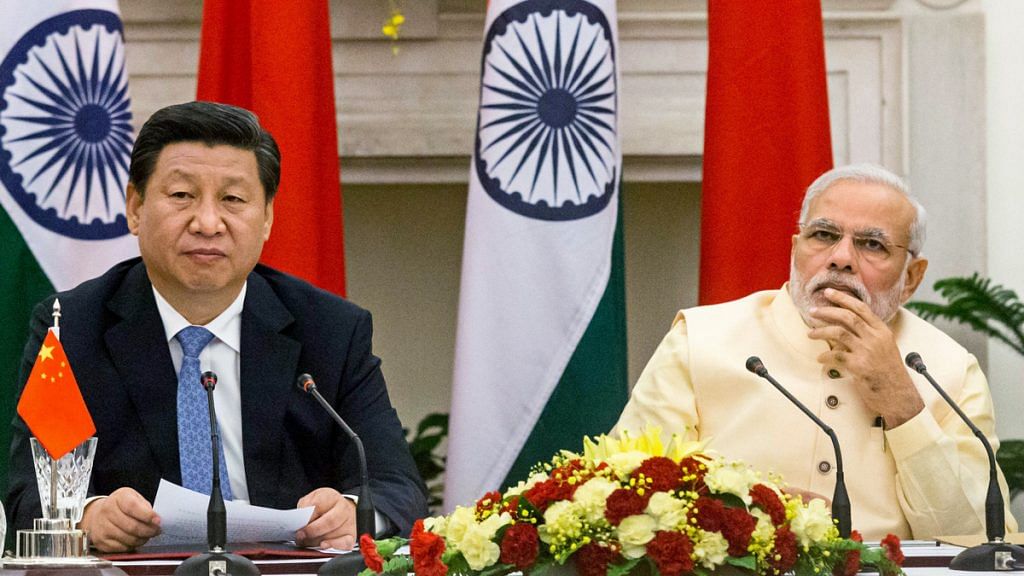Southern Asia is home to three nuclear-armed nations. India sits in the middle and has troubled relations with both Pakistan and China. Unresolved territorial disputes lend themselves easily to skirmishes. To this potent mix are added the not-so-infrequent State-supported terror attacks against Indian targets that also create crises. Every time this happens with Pakistan, nuclear noises emanate from Islamabad. They resonate all over the world because many hyperventilate over the possibility of the region collapsing into nuclear conflagration.
India and China have been engaged in a military stand-off since mid-April 2020 in Ladakh along the Line of Actual Control (LAC). During this nearly 100-day period, there has been virtually no attempt by either side to draw attention to their nuclear capabilities. There have not been any political statements or news about meetings of the nuclear command authority, nor a spate of articles or related discussions in the seminar circuit. For avid nuclear analysts and region specialists, the India-China nuclear watch has been rather boring.
Why is this so? Why is the nuclear dimension missing from a stand-off that has dragged on for three months and shows little sign of being resolved in a hurry?
Also read: In mountains, China’s military prowess has a vertical limit. 1962 is a half truth
A similar understanding
The Ladakh crisis is widely perceived to have woken India up to the reality of an aggressive China that is no longer hesitant to showcase its strength. And yet, nuclear weapons have not fetched a mention.
This is largely due to the fact that both countries have declared doctrines that are similar in terms of the role and practice of nuclear deterrence. Neither sees its nuclear weapon as a war-fighting instrument to be flashed in crisis. For both, the role of the weapon is narrowly framed for safeguarding against nuclear blackmail and coercion. Both have declared no first use (NFU) positions. Both have been engaged in enhancing survivability of their nuclear arsenals to ensure assuredness of nuclear retaliation. Both countries understand the futility of the use of the weapon, unless it can be executed in such a way that disarms the other. Both are conscious of the implausibility of such a scenario.
Nuclear postures of India and China reflect a quiet sense of nuclear stability, a feature missing in other adversarial nuclear dyads among the nine nuclear-armed States. This unstated and unacknowledged strategic stability is overlooked by analysts, particularly those from the West, brought up on a fare of ‘first use’ doctrines and nuclear sabre rattling.
Also read: What South China Sea arbitration is, and why Australia, India are getting more vocal about it
The ‘nuke’ in Ladakh conflict
Keeping a keen eye out for nuclear signals, in the current Ladakh stand-off, this has been found in a statement attributed to government sources, which alludes to India’s overall defence preparedness. Besides the deployment of assets of the three Services, it also mentions that of 20 MiG-29K fighter jets, and of nuclear-powered INS Arihant. This has been highlighted as evidence of India’s nuclear brinkmanship and part of a plan to ‘push its nuclear boundaries’. Such conclusions need some unpacking.
First, it must be understood that during crises, it is normal practice for navies to move their operational platforms out of base ports. Sailing out of INS Arihant, therefore, is not unusual. Chinese ships, including their operational SSBNs (nuclear-powered ballistic missile submarines) would be expected to do the same, depending on threat perceived.
Second, India’s nuclear posture, as known in the public domain, maintains forces in a de-mated, dispersed state. In case of a crisis build-up, it would be natural to observe movement of varied elements. To believe that every such move is a nuclear signal or brinkmanship is foolish.
Interestingly, there has been no mention from Beijing that they saw India’s SSBN move as “escalatory nuclear signalling”. An alternative to stop an adversary, and the unblinking nuclear watchers, from misreading such signals would be to keep nuclear forces on constant hair trigger readiness. Would that be a better idea and make for safer posturing?
Also read: Hypersonic nuclear weapons Russian Navy is getting and why they are unrivalled
Multiple statements but unchanged stance
NFU doctrines of India and China allow them the space to maintain a more relaxed nuclear posture. Of course, doubts continue to be raised on their commitment to NFU. In the case of India, for instance, a statement of Defence Minister Rajnath Singh, made one year ago, is often cited whenever there is a need to corral the view that “India’s nuclear policy is now one of official ambiguity, which in turn permits absolute flexibility of use”. In the case of China too, statements of scholars and officials ‘in their personal capacity’ are used to similar avail. Such interpretation, however, sits on shifty ground.
It needs emphatic reiteration that no official Indian statements have been forthcoming on change of position on NFU. Rather, in October 2018, while announcing the first operational deterrent patrol of INS Arihant, Prime Minister Narendra Modi had categorically stated India’s commitment to NFU. In August 2019, the much-quoted defence minister’s original statement in Hindi actually used the present tense to underline India’s policy of NFU, with the change, if necessary, depending on future circumstances. Even more recently, in March 2020, in response to a question in Parliament, Minister of State for External Affairs V. Muraleedharan clarified that there has been no change in India’s nuclear doctrine of NFU.
Misreading and over-interpretation of nuclear capabilities and statements can lead to unnecessary scare-mongering and misperceptions. Fortunately, India and China, until now, have shown maturity and understanding of the narrow role that nuclear weapons play in national security strategies. If both keep their doctrines unchanged, there may be deeper lessons to be learnt on nuclear deterrence from this dyad.
The author is Distinguished Fellow, Centre for Air Power Studies, New Delhi. Views are personal.
